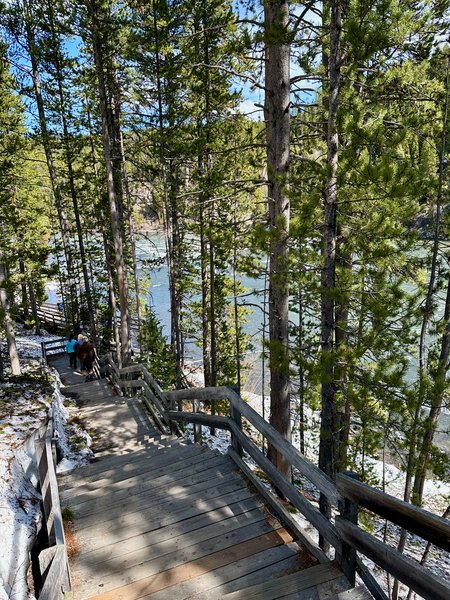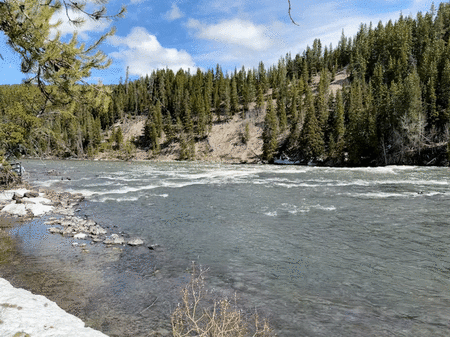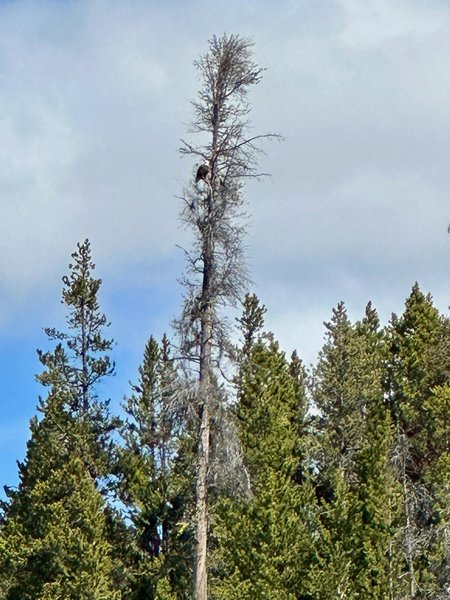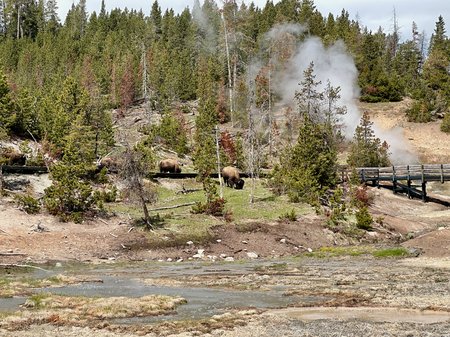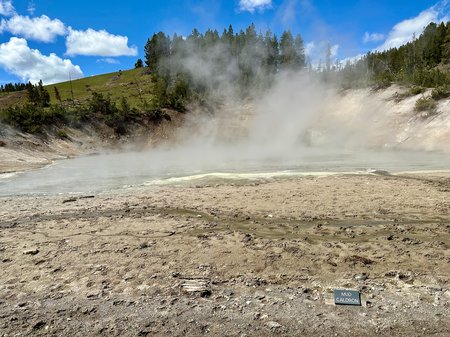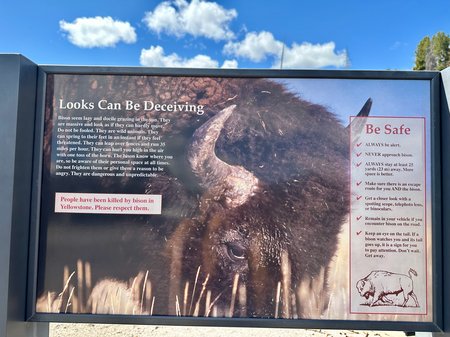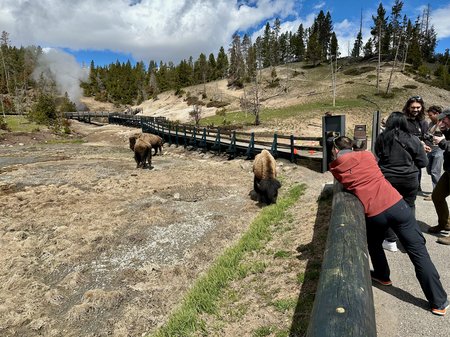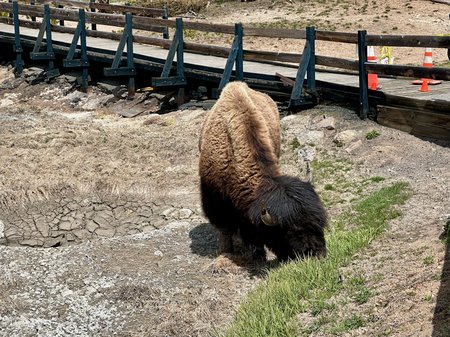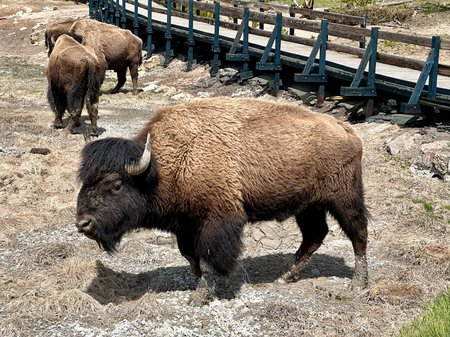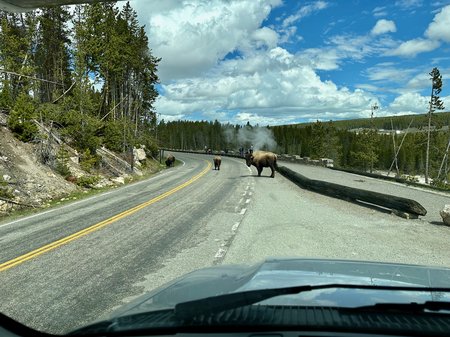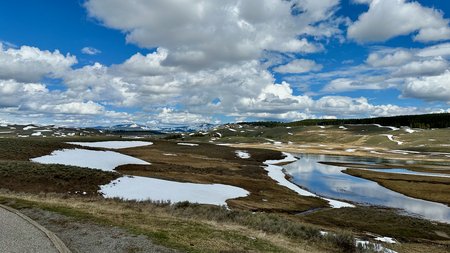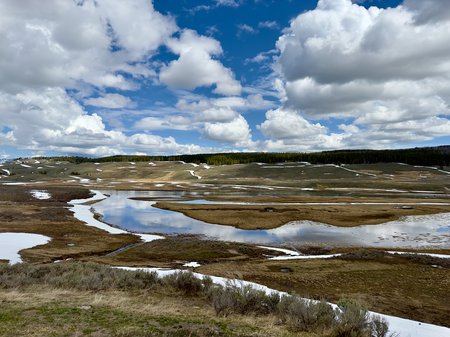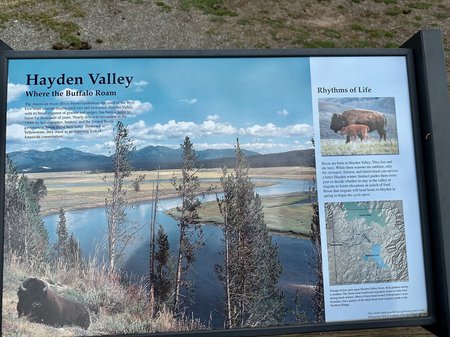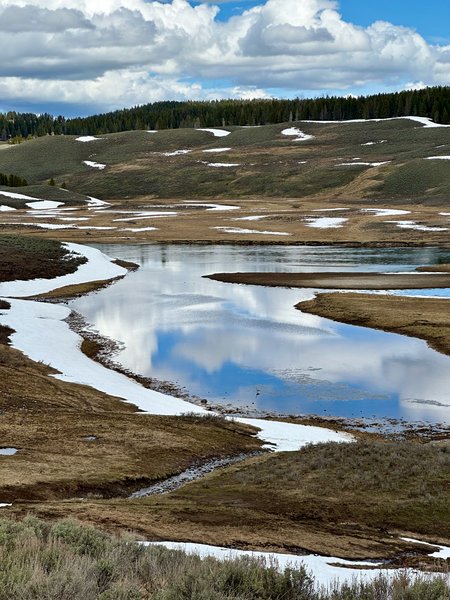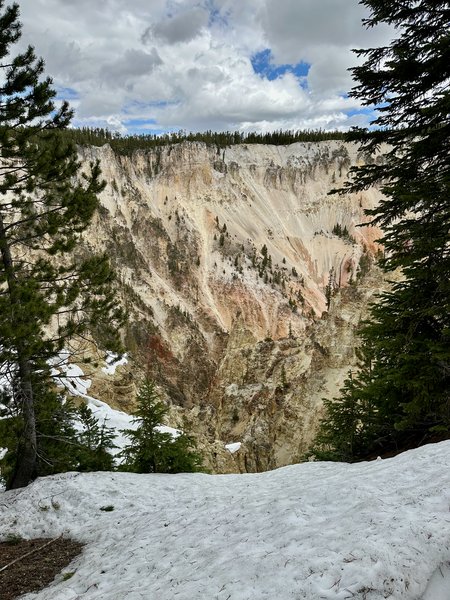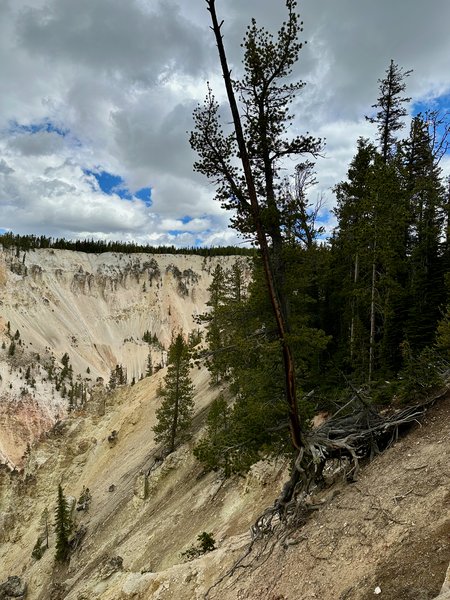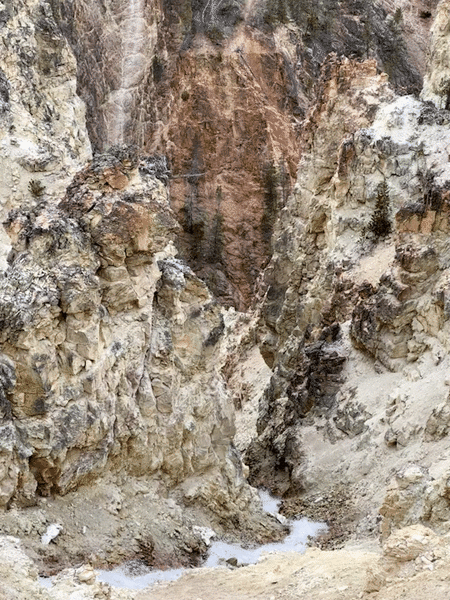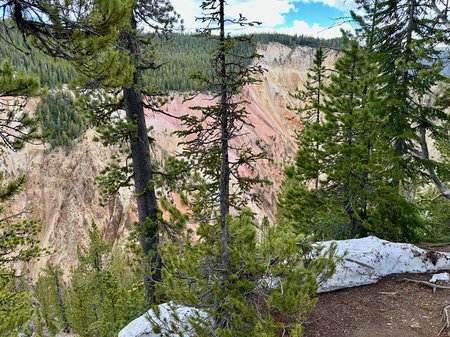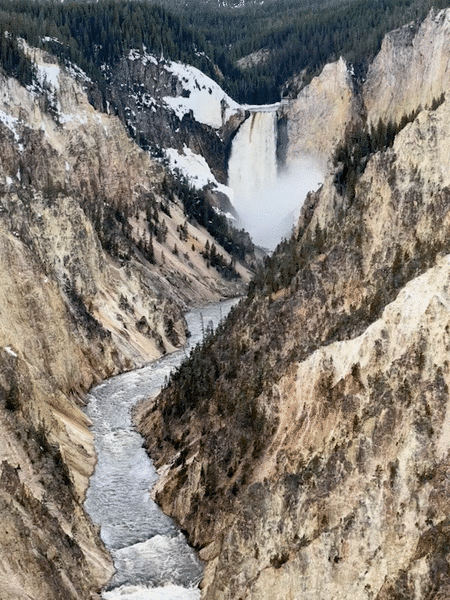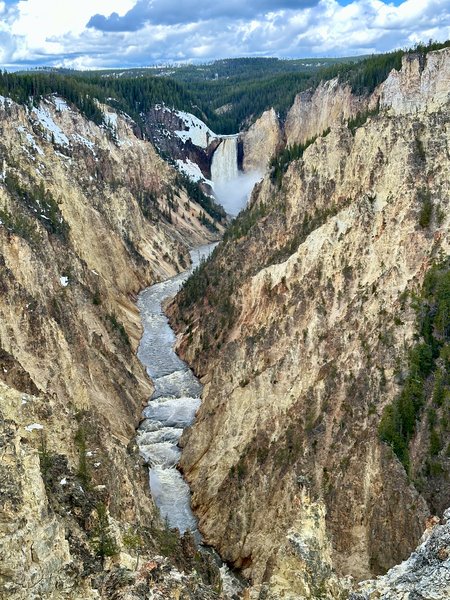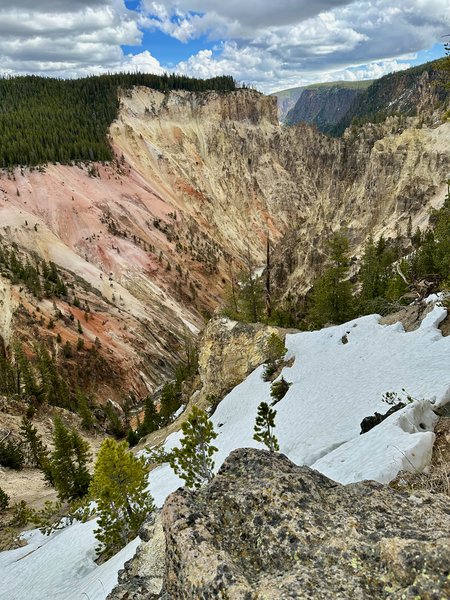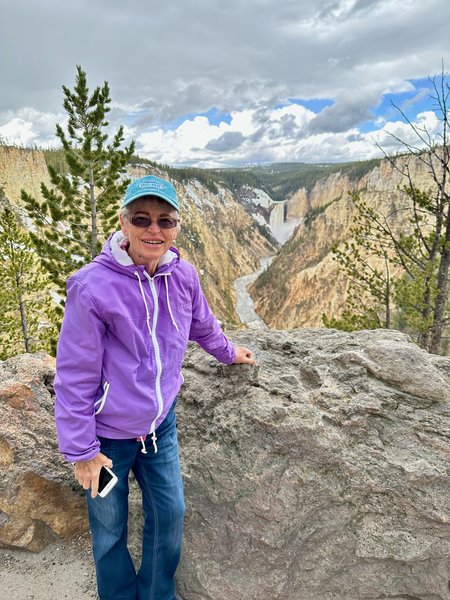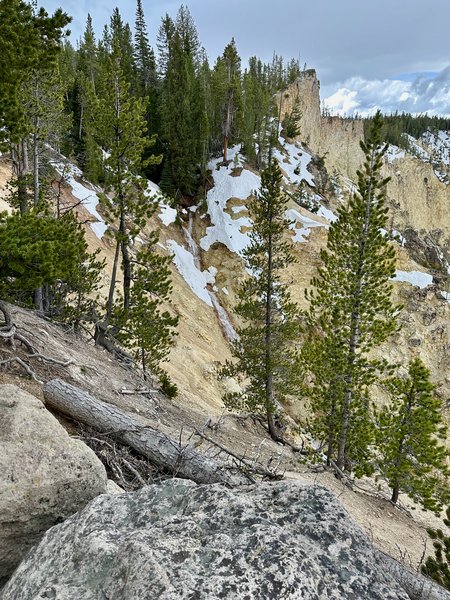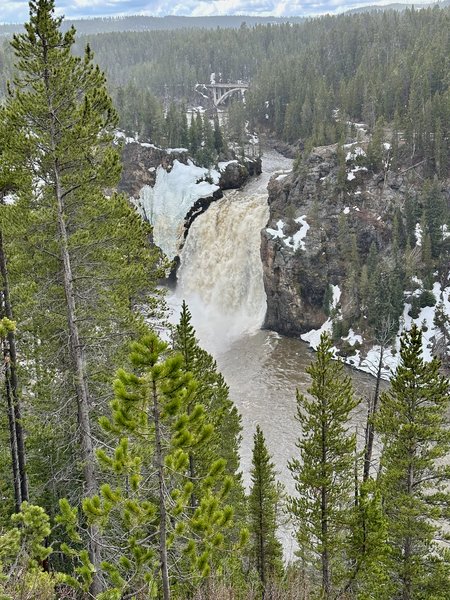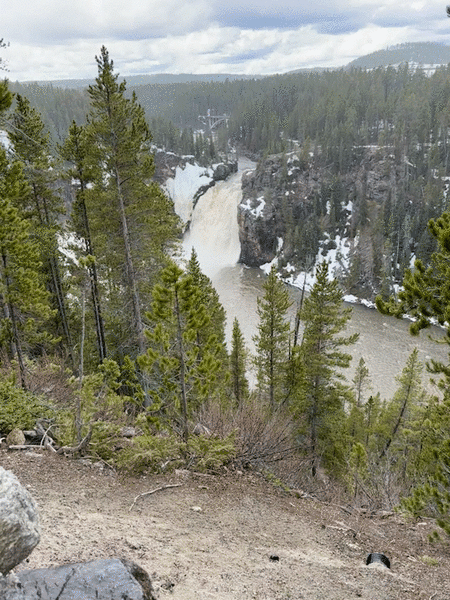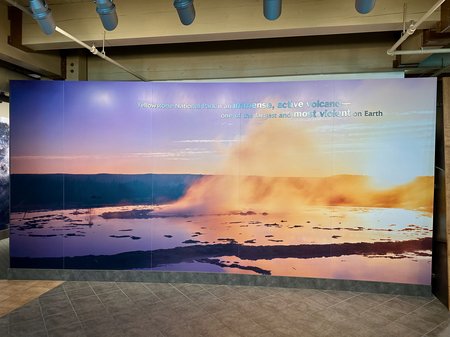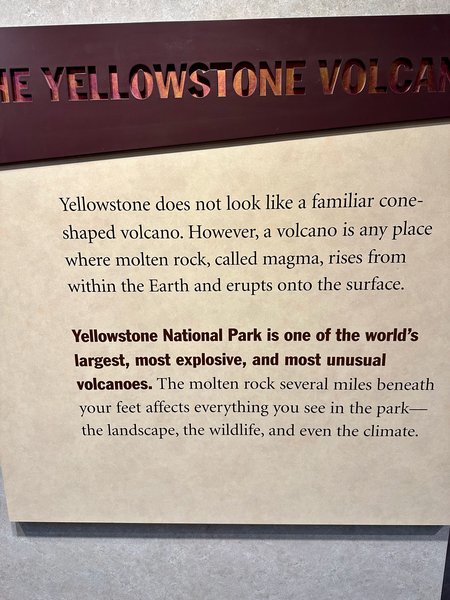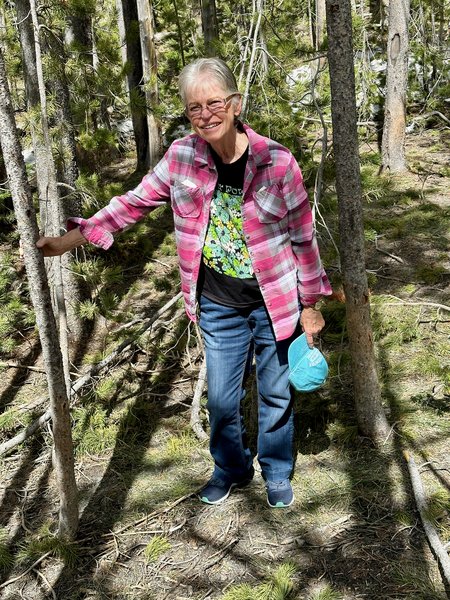Fishing Bridge Junction to Canyon Junction
You are on what is called the Grand Loop Road heading North from Fishing Bridge Junction. The first thermal feature is called Mud Volcano and that is where we saw our first Bison. We were able to view them there up close because they were on the other side if this very heavy log fence.
Further on is the Grand Canyon of Yellowstone. The colors derive both from minerals and from living organisms. There are infinite shadings of yellow and orange and also reds and pinks, off-whites, browns, greens, and black. Most of the colors result from the weathering of the rocks and from the upward passage of hot water and steam.
The Falls on the Yellowstone River was raging as the river was at full capacity. Here's some statistics on the canyon:
- Upper Falls: 109 feet (33 m)
- Lower Falls: 308 feet (94 m)
- Canyon depth: 800 - 1200 feet (240 - 360 m)
- Canyon width: 1500 - 4000 feet (450 - 1200 m)
- Canyon length: about 20 miles from the Upper Falls to Tower Junction
